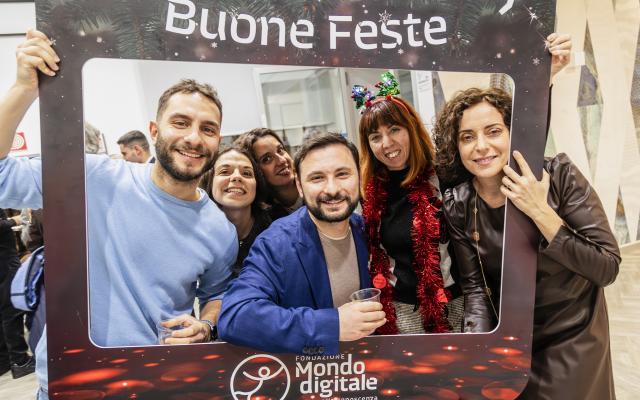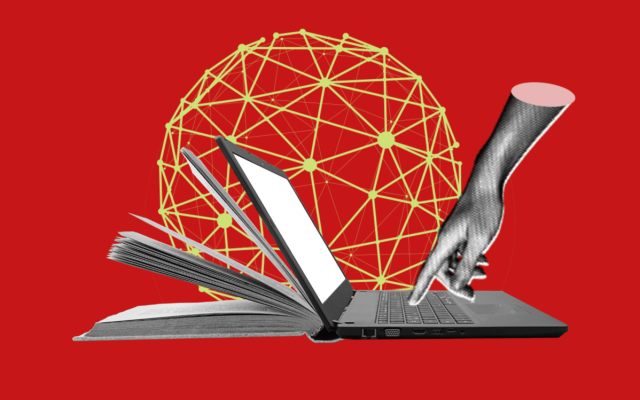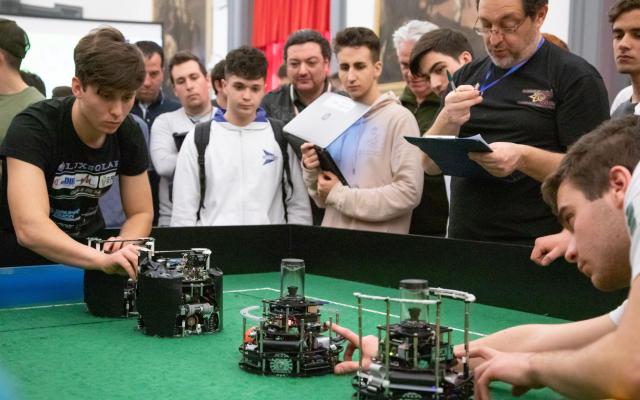Here's how we're rewriting the narrative of STEM, with mothers, girls, trainers, teachers and researchers
At RomeCup 2025 (7-9 May), an international event promoted by the Fondazione Mondo Digitale, girls and women show that robotics can be a field of creativity, innovation and inclusion. From prototypes for health to environmental sustainability, from school challenges to immersive technologies, the tech universe is coloured by voices and faces that are rewriting the narrative of STEM.
Beyond stereotypes: female students take centre stage
"It's nice to represent this role, this gender. Many people think it's only for men, but we women have the skills too and we shouldn't stay in the shadows,‘ says Paola Maria Latini, a student at the Liceo Landi high school in Velletri. Her classmate Simona says she feels “honoured” to be part of an all-female team: ’There are lots of us in robotics classes at school, but women are still rare in competitions."
However, change is underway. ‘When I started teaching mechanics, the classes were made up only of boys,’ explains Alessia Galli, a teacher at the Majorana technical industrial institute in Avezzano. ‘Today, things are changing. More and more girls understand that hard sciences are not a male prerogative. All you need is passion and a desire to do it.’
From nursery school to 3D printing
The work of FMD trainers is crucial in introducing children and young people to computational thinking. Letizia Lucarelli brings coding to nursery schools: ‘Through playing with robots such as Bibot and Code & Go, even 5-year-olds learn to orient themselves in space and develop logic and problem-solving skills.’
Silvia Tarallo describes vertical pathways ranging from Lego Spike workshops to 3D printing and artificial intelligence with machine learning for kids. ‘I brought three AI workshops for secondary schools to RomeCup. It's important to make young people understand the potential of these tools, including their creative potential.’
Chiara Lunarcello worked with first and second year middle school classes at the Istituto di via Viscontini in Pioltello, where she led a course on multilingualism and storytelling in English. ‘We addressed topics such as communication, sustainability and storytelling. The children, who come from a multicultural background, brought their experiences to the table using tools such as Canva and audiovisual content, and even explored writing for anime and musical formats.’.
Innovation, creativity, social impact
Many of the projects presented by the students combined technical rigour with social vision.
- Health and well-being: Chiara Brigoli, a researcher at the Inail Prosthetic Centre, illustrated innovative devices such as the Mano Annes and the Caviglia Armonico, developed with the IIT. ‘We work on active prostheses, 3D printing and osseointegrated implants, always with the aim of improving people's lives.’
- Environmental monitoring: Viola Paolassini from the Da Vinci High School in Iesi designed Patch, a system with a camera trap and machine learning to identify harmful insects in healthcare and agriculture. ‘It is also useful for pet owners who want to monitor for parasites.’
- Sustainability: Gaia and Anita from Liceo Stem Bracelli in Rome have created Oxy Tower, a plant tower that purifies the air with CO₂ sensors and automatic fertilisation from an aquarium. ‘Everything is controlled remotely thanks to an Arduino R4 Wi-Fi.’
- Accessibility and gaming: Micol and Alice from Liceo Amaldi have designed Lo scrigno di Erone (Heron's Chest), an educational game with Braille, LIS and Malossi Method support. ‘We have also programmed a mobile pawn with Microbit and low-cost materials, inspired by the father of robotics.’
- Cultural and sports technology: Marta Valenti (Digilab, Sapienza) is working on a metaverse for the enhancement of cultural heritage, while Cristina Pescante of FITA presented Virtual Taekwondo, a virtual sport that uses sensors and visors for contactless training.
- Digital education and emerging phenomena
- Sonia Cerrai, a researcher at the Institute of Clinical Physiology of the CNR, presented an interactive installation to reflect on digital phenomena involving adolescents, based on data from the ESPAD study. "We collect information on risky behaviours, such as ghosting, fabbing or the use of loot boxes. We want young people to learn to recognise these behaviours and reflect on them, even if they often engage in them without knowing what to call them'.
- Technology and awards: Anna and Denise from the Liceo Majorana in Pozzuoli won first place in the Nonnibot category with their translator ET – Easy Talk Machine. “Seeing our efforts recognised was a great satisfaction,” they said.
Reasoning, creating, sharing
Behind every project there is passion, commitment and a desire to understand the world. ‘I started without knowing anything about robotics, but I became fascinated by hardware construction. The problem-solving skills you develop are useful everywhere,’ says Giorgia Mazza, a student at Liceo Avogadro in Vercelli.
Laura Grieco (Liceo Landi) talks about “a lot of passion, time and problem solving”, while Paola and Simona appreciate robotics because it helps them “better understand how the systems around us work”.
The role of schools and families
Schools are hotbeds of experimentation. “Three years ago, we introduced two hours of enhanced robotics per week,” explains teacher Sabina Sabatini. ‘Competitions help to put cross-cutting skills such as teamwork and quick thinking into practice.’
Prof. Assunta Chiummariello of Liceo Amaldi emphasises the importance of ‘working together and activating creativity to transform even technical subjects into a positive experience.’ Finally, the support of families: "It is a very motivating experience, it gives us enthusiasm and recognition. The children are overjoyed," says Maria, Giacomo's mother, who came from Brescia with the Dream Puzzle association.
Many voices, one direction
This story brings together some of the female testimonials that we had not yet shared in previous thematic focuses on the RomeCup. There are many others: stories of female students, mothers, researchers, trainers and teachers who are contributing, with competence and passion, to rewriting the future of STEM. Together, they are broadening the vision of innovation, making it more inclusive, concrete and accessible.
RomeCup 2025 thus confirms its status not only as a technological showcase, but also as an educational laboratory where a more equitable and participatory future is being built. And the young women protagonists demonstrate that, when you invest in training, inclusion and creativity, robotics can truly become feminine. And universal.



